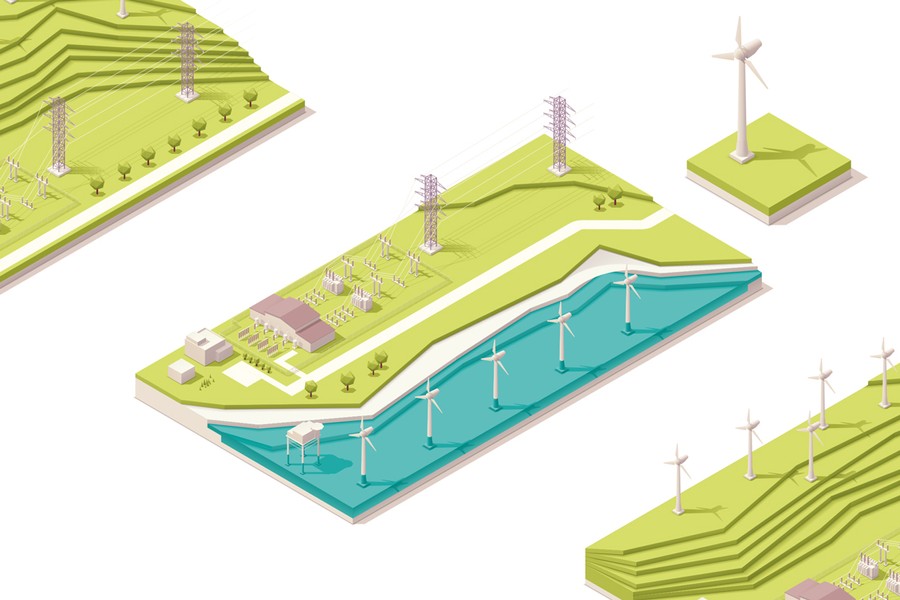In recent months, climate change has been front and centre of the news agenda. It has been central to election campaigns across the globe and at COP29 in Baku.
In the UK, the new Labour government has elevated the climate agenda and is aiming to make Britain a clean energy superpower. This complex transition involves not only switching electricity generation from fossil fuels to renewables, but also the electrification of our economies to harness and deliver the abundant green energy supplied by wind and solar power.
The scale of the challenge requires the public and private sectors to work together to achieve this common goal. From the public sector, we need an economic environment that is conducive to investment: stability of public policy, a predictable planning system, and revenue support mechanisms that provide long-term cash flow visibility and inflation correlation to attract low-cost capital. There is a growing recognition of this across Europe, including the UK, with positive policy initiatives anticipated that we hope to see converted into supportive legislation and regulations.
The private sector not only brings the additional capital required to drive this transition but also competition to drive down the cost of that capital, and ultimately the costs to consumers. Companies such as The Renewables Infrastructure Group (TRIG), along with our peers, are well positioned to drive investment into renewables and the supporting infrastructure. This closed-ended listed investment company structure is uniquely positioned to invest for the long term and provides liquidity with millions of shares traded daily.
As an equity investment, a renewable energy project has the potential to deliver attractive returns on investment and the opportunity for portfolio diversification, whilst contributing to a positive climate impact. Returns can be achieved in three ways.
First, investors can invest in existing renewables infrastructure such as wind, solar and battery storage projects. This option carries the lowest relative risk as the asset is operational, with a track record of energy generation. Consequently, such projects will also have returns at the lower end of the spectrum.
The option with the greatest impact on the energy transition, is to develop new projects from scratch.
The second option to deliver returns is to leverage an active asset management approach, which includes upgrading the hardware or software of an existing site. In doing so, the returns of an operational project can be enhanced. For instance, TRIG employs motorsport technology to improve the aerodynamics of wind turbines in the portfolio. This option enhances the output of existing projects and carries less risk than investing in a completely new site, therefore maximising the value of funds already invested.
Towards the end of a project’s life, the investor will initially seek to extend the operational life of the asset through careful and calculated operations and maintenance regimes. Thereafter, it can be sought to repower the project. This involves using as much of the existing infrastructure as possible, particularly civil and electrical, to renew the electricity generating wind turbines or solar panels with the latest technology.
The final option, and the one with the greatest impact on the energy transition, is to develop new projects from scratch. This can range from developing a new project from a blank sheet of paper to entering a project at the ready-to-build stage with shovels ready to go into the ground. Investing at this stage allows investors to capture higher returns for their shareholders and is increasingly the approach being chosen by the most experienced management teams, recognising the proven nature of mature renewables technologies. TRIG, for example, has built nearly a quarter of its own generation capacity and has a further 1GW of projects, including 650MW of battery storage projects, that we are seeking to develop and enter into construction by 2030. Crucial to this development is balance sheet discipline, as it provides the option to either build the projects ourselves or sell them on to crystalise a development premium.
In a diversified portfolio, we believe there is a place for all three strategies to generate a resilient income stream as well as growth in the capital base. Deploying private capital across the spectrum of renewable energy investments is an economic opportunity for investors, environmentally important for society and will be instrumental in delivering the green transition.
Minesh Shah
Managing Director, The Renewables Infrastructure Group (TRIG)
The value of securities and the income from them can fall as well as rise. Past performance should not be seen as an indicator of future returns. All views expressed are those of the author and should not be considered a recommendation or solicitation to buy or sell any products or securities.




